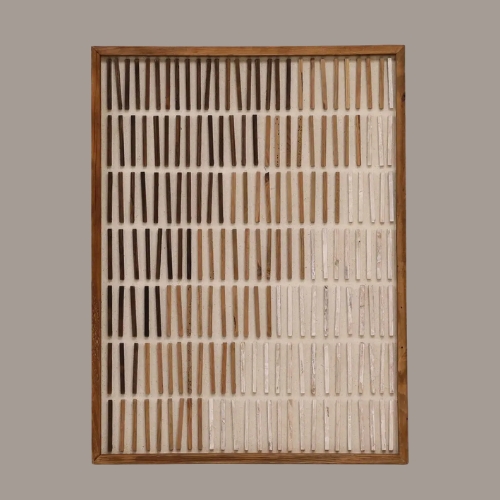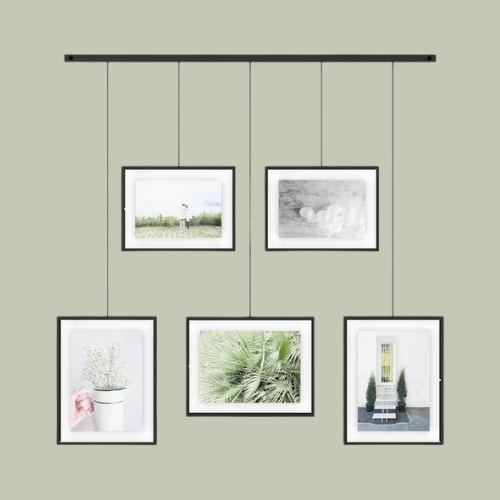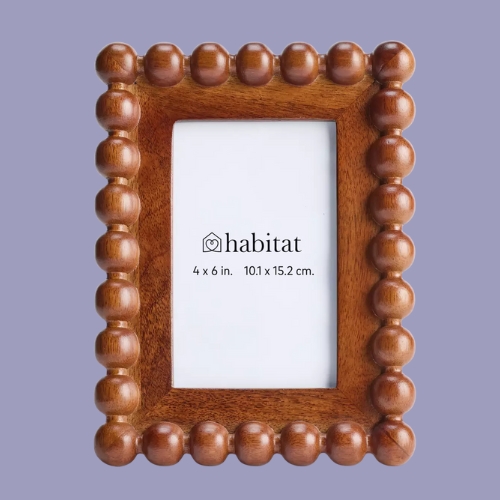5 Places You Should Never, Ever Hang Art in Your Home — Unless You Want It to Look Awkward, Instead of Awe-Inspiring
Proper placement gives balance to a space and makes a room feel more intentional. Here are the places to avoid, and what to do instead
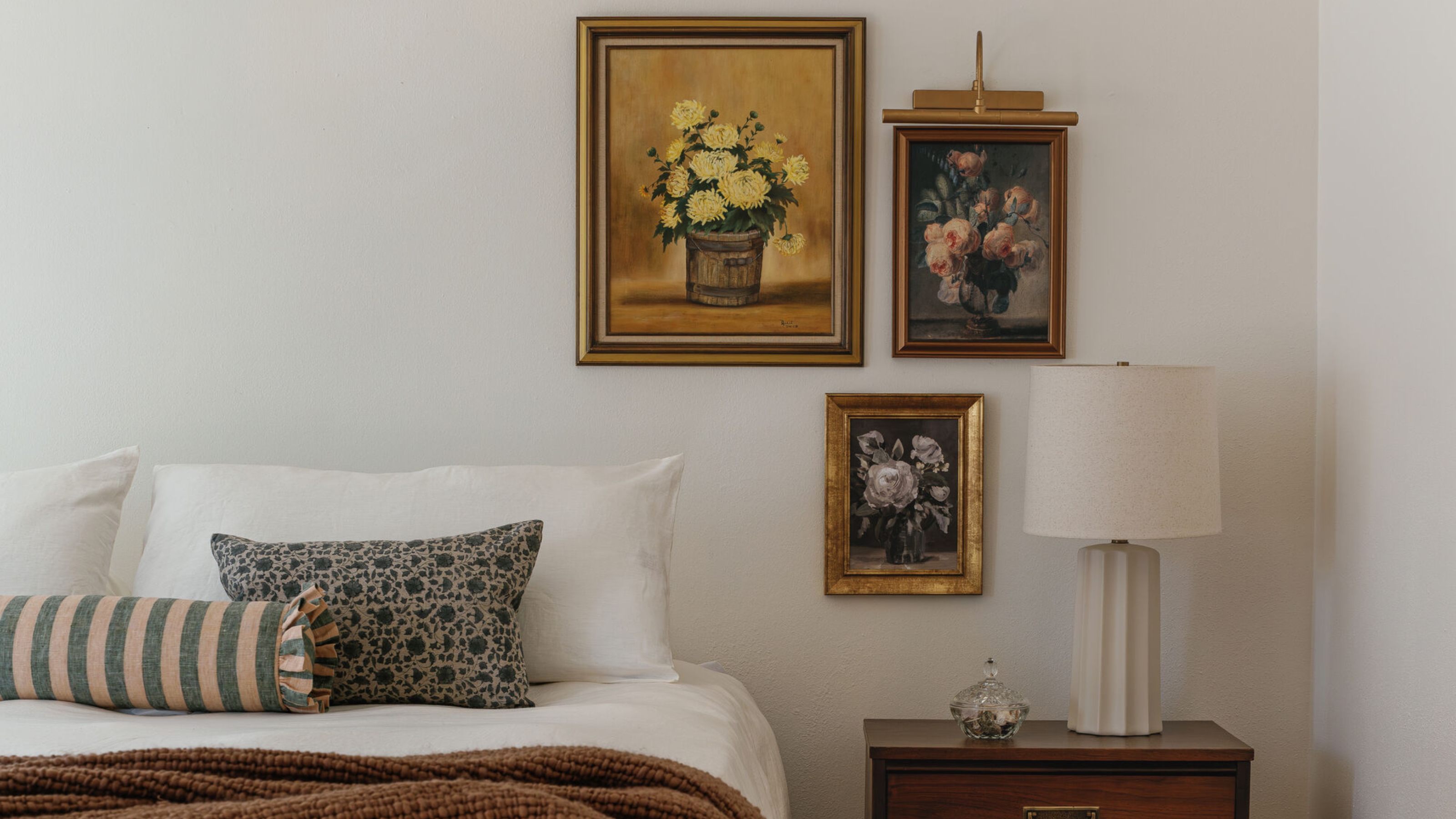

Art can be one of the hardest things to get right in your home. Whether there's not enough wall space to squeeze in all your favorite pieces, or too much, poor placement can make even the most magnificent work look awkward. And sometimes, it's not even just where on the wall you're hanging the art that can go wrong, but where in the home.
"Harmony comes from height, proportion, and alignment that speak to the furniture and architecture around them," explains interior designer Lauren Saab. "If works are hung too high or scattered about without rhythm, the room loses its center of gravity." And then there are the rooms to avoid at all costs — think spaces with high humidity, a lot of natural light, or heavy foot traffic.
Yes, sometimes the biggest art hanging mistake you can make isn't about how you hang it, but where. So before you put hammer to nail, make sure you know the five places experts warn never to hang your art in the home.
1. Bathrooms and High Humidity Spaces
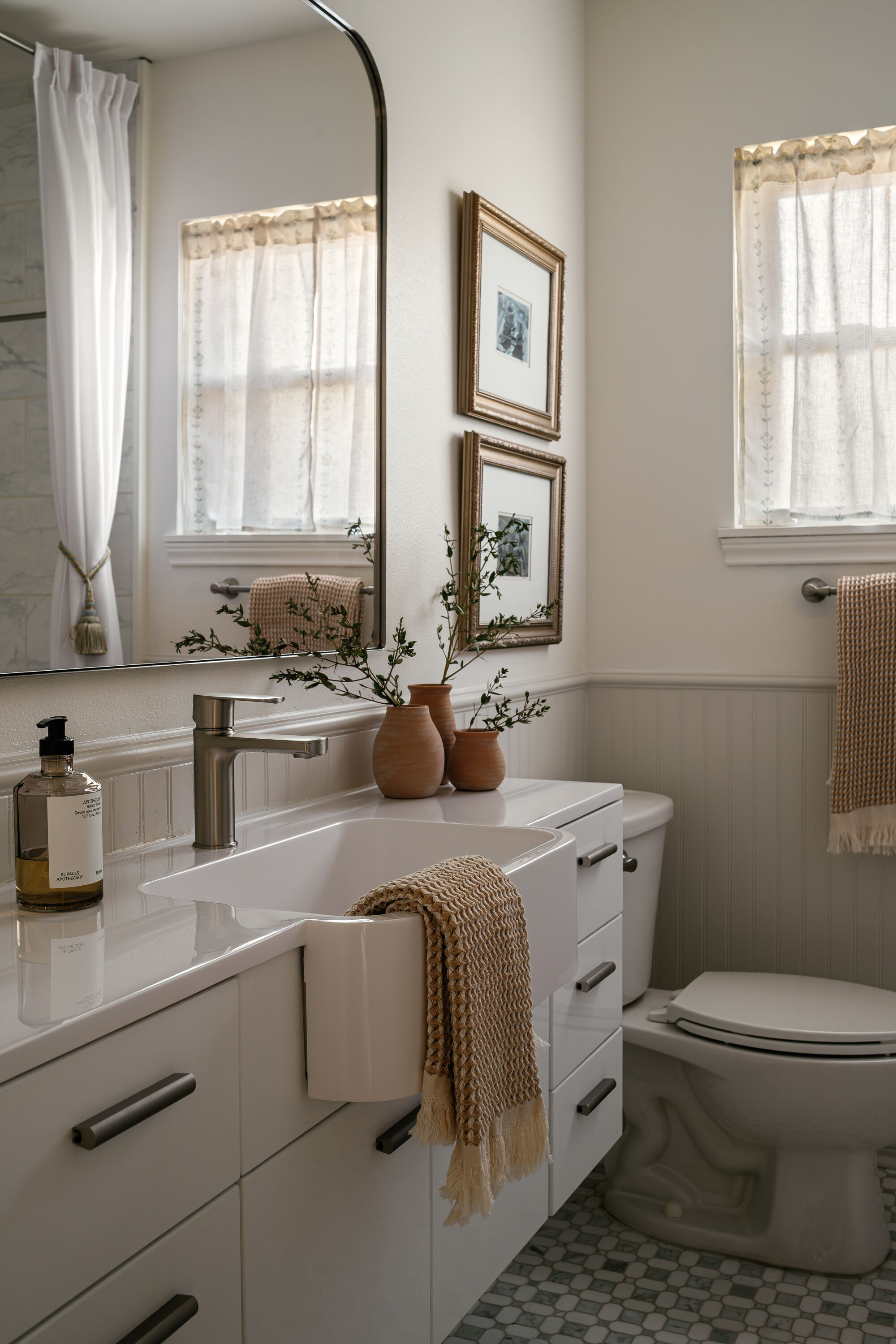
INSTEAD: Make sure any art hung in the bathroom has a glass covering and is far away from anywhere water could get on it.
New York-based art advisor, collector, and appraiser, Kelly Cahn, says, "Locations that expose artwork to high humidity can lead to discoloration, mold, mildew, and peeling." This is especially the case when art is hung near sinks or direct splash zones.
That's not to say artwork can't be styled as modern bathroom decor for a moment of personalization. It's just important to ensure each piece is framed under glass to keep things crisp and protected against humidity. "Hang pieces above the backsplash line or near natural light where they can breathe without being damaged," says interior designer Lauren Saab.
2. Anywhere With Direct Sunlight
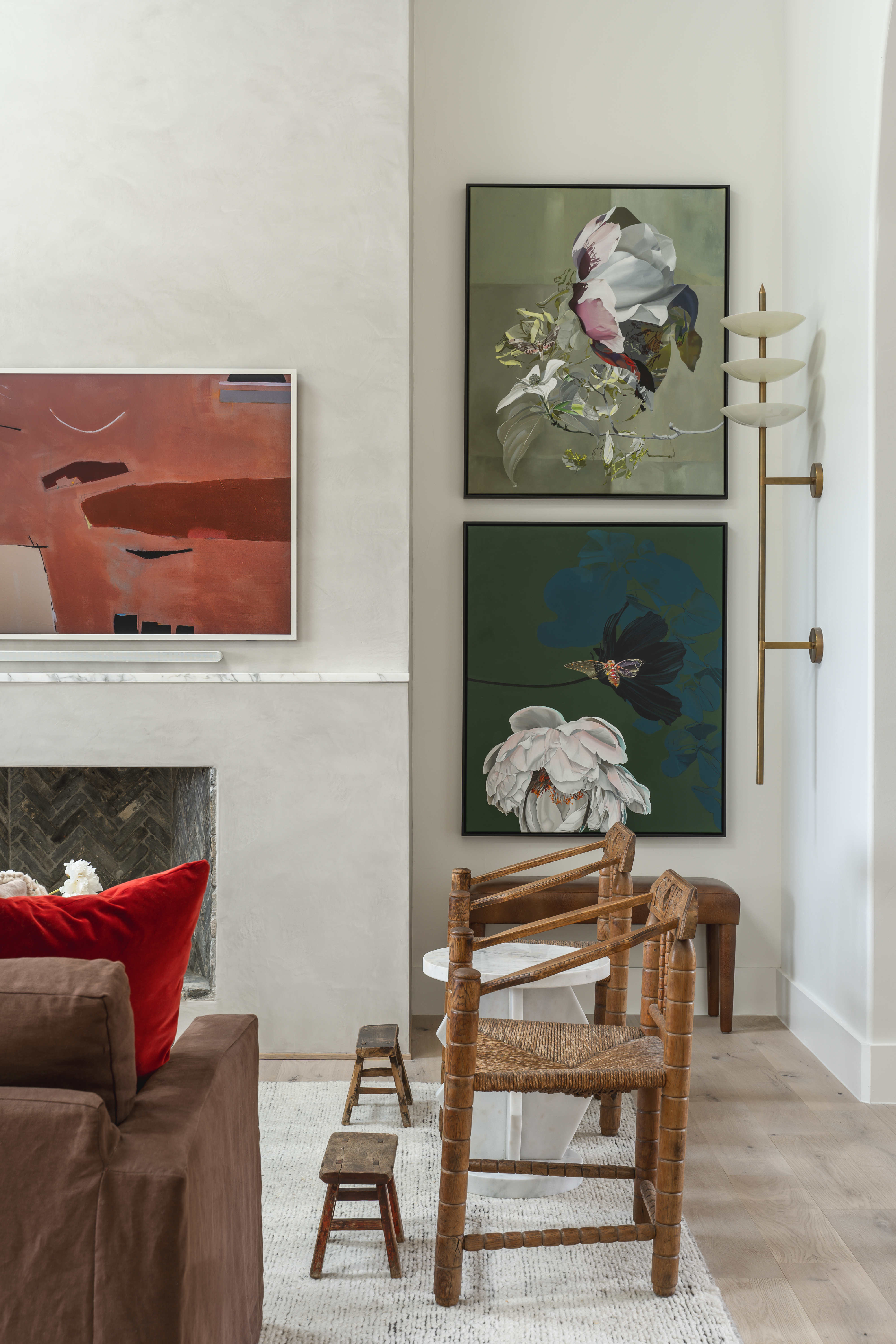
INSTEAD: Make sure artwork hung in bright rooms still has shady corners to protect it.
Next up, Kelly says that any room that gets too much natural light (like south-facing rooms) is another space to avoid hanging art. Just as lighting can affect paint color, too much sunlight can cause your art to have a glare, fade, and ultimately change the way the piece appears.
To rectify the issue, Kelly recommends "getting UV-tinted window film [available on Amazon] installed if you want to hang it in these areas." Or tuck your art into bookshelves and reading nooks to provide a more shaded area in very sun-lit rooms.
The Livingetc newsletters are your inside source for what’s shaping interiors now - and what’s next. Discover trend forecasts, smart style ideas, and curated shopping inspiration that brings design to life. Subscribe today and stay ahead of the curve.

Kelly Cahn, AAA, is a seasoned art advisor, curator, and certified appraiser based in New York, with two decades of experience in the art world. Kelly holds a Bachelor of Arts in Art History from Tulane University and a Master of Arts in Modern Art, Connoisseurship, and the History of the Art Market from Christie’s Auction House in New York. She is the founder of Kelly Cahn LLC: Art Advisory and Appraisals, where she guides private collectors and corporate clients through art acquisitions, collection management, and appraisals.
3. Above an Active Fireplace
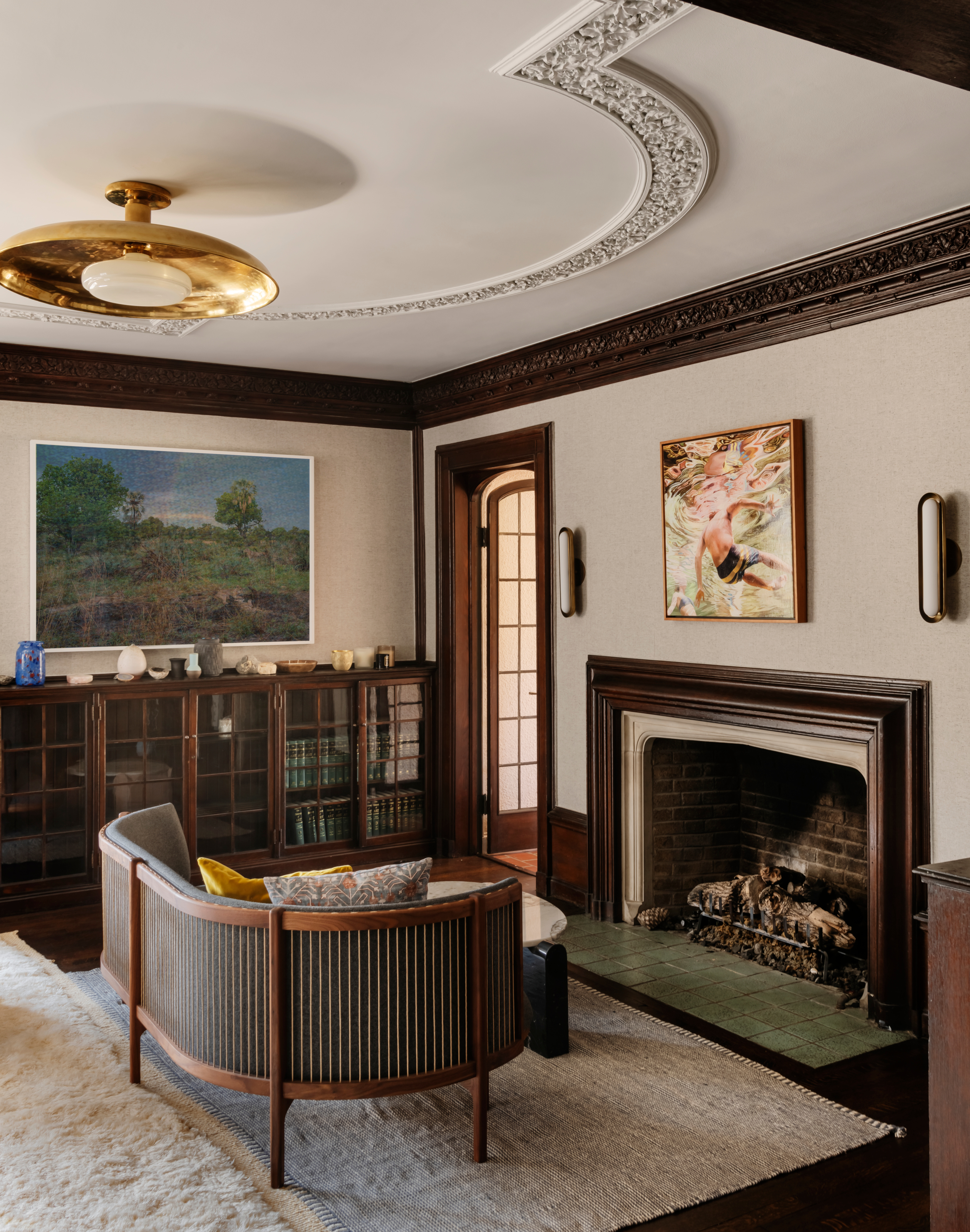
INSTEAD: Consider how precious the art piece is and how large before committing to the above-the-fireplace spot.
Art may be one of the most popular over-the-fireplace decor ideas, but unfortunately, it may also be one of the worst. "This is because heat will damage artworks over time, leading to changes in coloration of the support and the medium, fading, warping, and cracking," says Kelly.
So, if you are debating putting your favorite art piece to gaze at over the fire, you may want to reconsider — or think about what piece, and how high to hang art.
"If the artwork is hung too low, it can receive damage from the heat source, and if you hang it too high, it can appear to be unconnected to the rest of the space," notes Lauren.
Ideally, the art should provide a buffer zone between the top of the mantel and the art itself to create a single composition. Artwork with rich textures or softer colors will complement a fireplace much better than a piece of artwork with a reflective surface that produces glare.
4. High Traffic Areas

INSTEAD: Hang your art in places that won't risk being knocked around or damaged.
If you're decorating an awkward entryway, hanging art in a narrow hallway, or anywhere it is likely to get bumped or jostled, "Consider hanging it higher than you might otherwise," says Kelly.
The standard rule for hanging art is to center it around 60 inches, but Kelly "recommends going higher in places like a stairway or hallway." This way, there is enough space to utilize the small space without risking damage to the art. You can also employ picture hanging hacks to help with guidance in these zones.
But the best alternative is to hang art in a safer and out-of-the-way space, like behind a sofa or on a dining room wall. However, "If you're hanging work over a sofa, make sure it's high enough that heads can't lean back and hit it," says Kelly.
5. Large Artwork Above Headboards
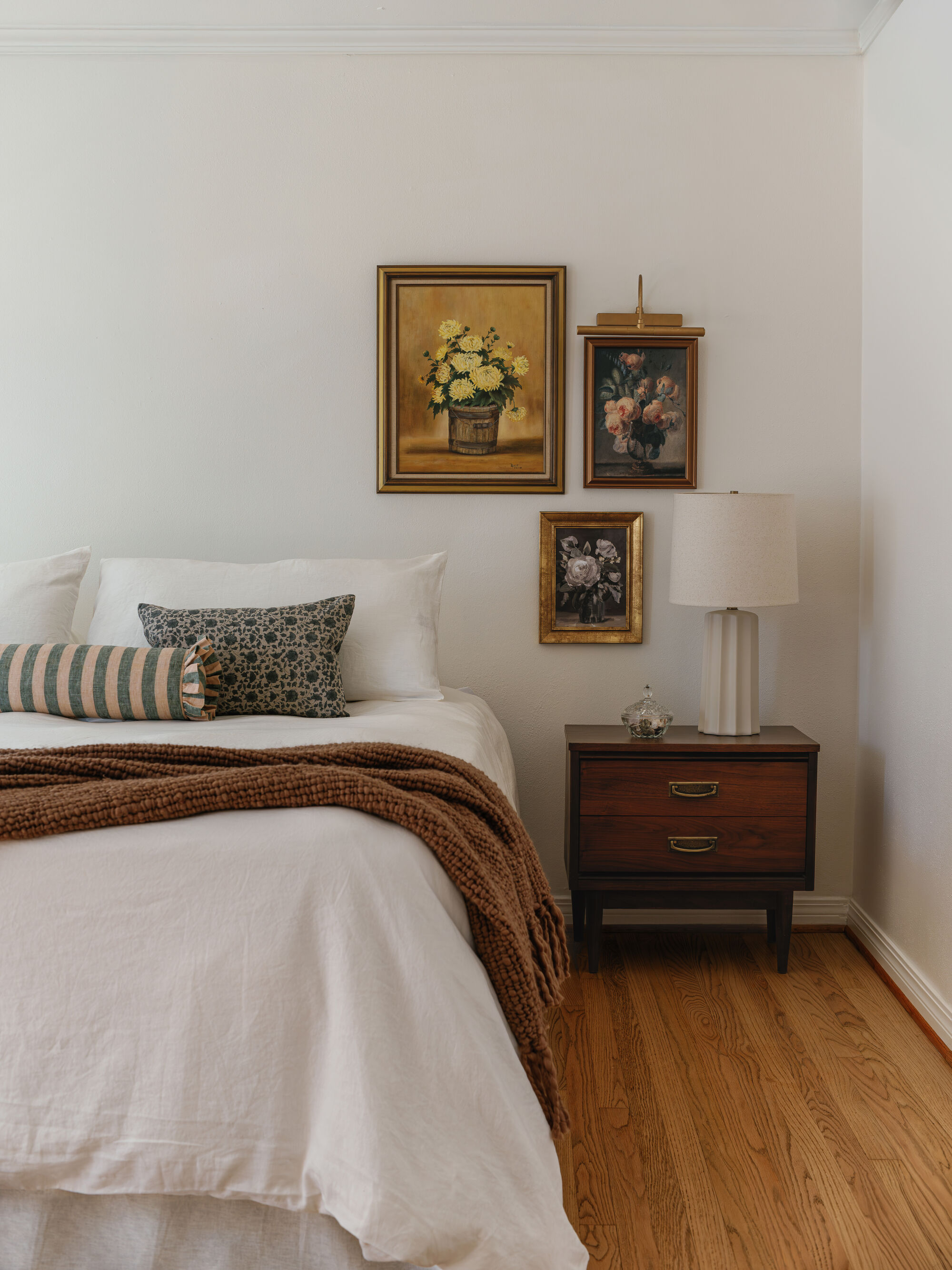
INSTEAD: Get creative with your bedroom art, rather than just putting a large piece over the bed.
Oversized art is the classic above-the-bed decor move, but it often dominates a room instead of enhancing it and is usually hung too high. "The best placement for bedroom wall art is lower and more connected to the furniture around it," says Lauren.
Rather than relying on one large piece above the headboard, pair a few smaller pieces together near the nightstand. A three or four-piece gallery wall forms a vignette that feels intimate and architectural rather than staged.
"The mix of sizes and heights makes the wall feel collected and effortless, giving the room warmth without visual weight," adds Lauren. "The goal is for art to feel like part of the bedroom’s rhythm, not something hovering over it."
A single small frame can look lost, and a heavy piece can throw off the balance. So, sometimes even leaving blank space is the stronger choice. "Every artwork should bring mood or meaning, not just fill emptiness," the designer adds.
Of course, you could also forgo hanging your art altogether — ever tried leaning artwork against the wall? Some say it's the coolest way to do it these days.

Olivia Wolfe is a Design Writer at Livingetc. She recently graduated from University of the Arts London, London College of Communication with a Masters Degree in Arts and Lifestyle Journalism. In her previous experience, she has worked with multiple multimedia publications in both London and the United States covering a range of culture-related topics, with an expertise in art and design. At the weekends she can be found working on her oil paintings, reading, or antique shopping at one of London's many vintage markets.


